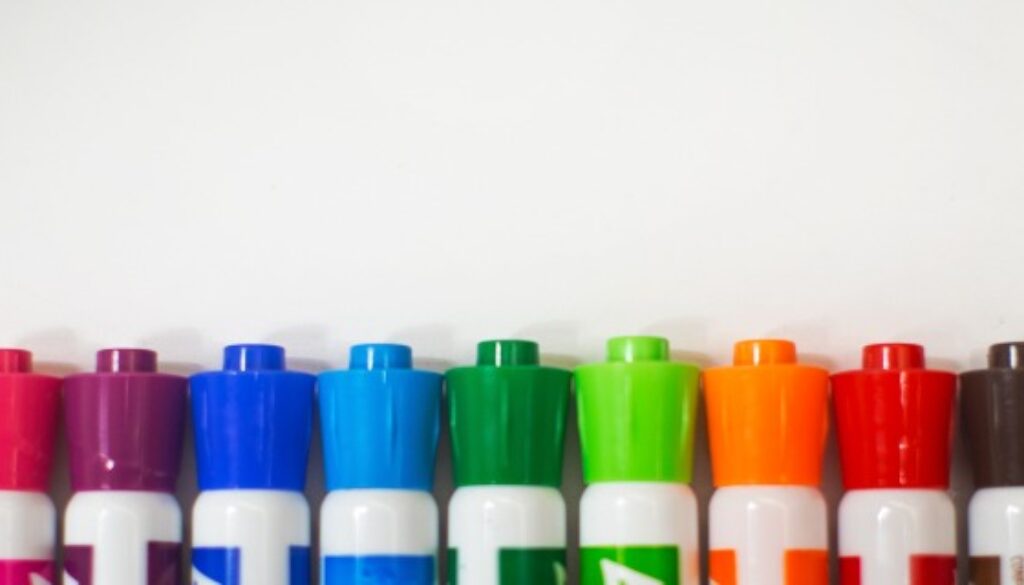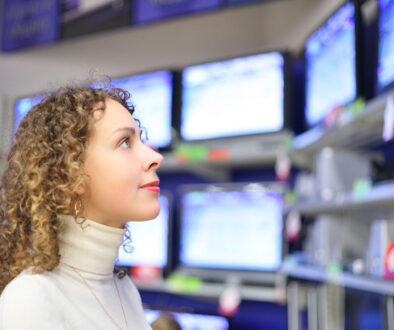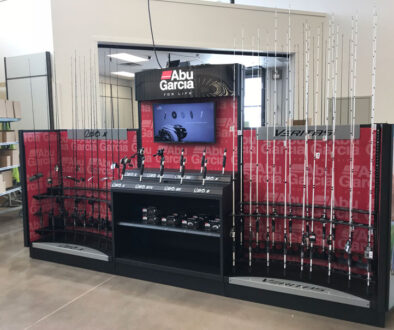The Psychology of Color and How Retailers Can Benefit From It
From the color you pick for your customized POP display to its careful placement in the store, consumer psychology should drive your decisions. Often, shopping impulses take place on a subconscious level, causing an emotional reaction.
We’ll take a look at the impact of color on your display, how you can benefit from it, and the basic psychology behind today’s consumer.
Color: How Retailers Can Benefit From Psychological Insights
Color is about much more than your favorite hue or the perfect shade to match your carpet. The subtle effects of color on our attitudes and preferences can register on a subconscious level, causing an emotional reaction.
In fact, marketing studies indicate that 90 percent of impulse judgments about brands and products are based on color alone.
The emotions associated with various colors
Any Google search will produce several results about the psychology of colors. You may find some general information such as:
- Red implies excitement.
- Blue signifies dependability.
- Yellow implies optimism.
- Purple hints at creativity and imagination.
These statements sound great, but they’re a bit too general. There’s more to color psychology than meets the eye. It’s not as simple as one color resulting in one emotion. The truth is a bit more complicated.
Actually, color psychology depends upon the personal experience of the viewer. It also depends upon the “personality” of your brand.
It’s not so much the color itself that makes a difference, but how well that color complements your brand story. For example, if your company creates children’s toys, a logo in black and brown will not evoke the emotion you desire from your audience.
How can you determine the personality of your brand?
To examine the personality of your brand, look at the promises your product makes to potential customers. Is it proclaiming dependability and durability? If so, consider the colors associated with power tools or rugged outdoor gear — gray, black and brown.
Does your product promise relief and refreshment? Consider shades of blue that evoke the image of water.
Once you determine your brand’s personality, then you can work with our team of designers and engineers to craft the perfect color palette to reinforce your message.
How can your POP display benefit from color psychology?
Following are some important factors to consider when deciding upon a color to represent your brand:
- What color do your competitors use in their display stands?
- If all of your competitors are using green, then you’ll stand out by using purple.
- Does your color reflect the personality of your brand?
- When you think of tractors, you think of agriculture. Therefore, isn’t it perfect that John Deere utilizes a bright green to create the association with farming? Can you imagine John Deere using a color such as purple or light blue? It doesn’t fit with the personality of its brand.
- Can you select rack and sign colors that complement your logo?
- Hopefully, you have a logo featuring colors that reinforce the personality of your brand. If you do not — and you can’t change your logo – look for complementary colors that lend themselves to your message. You can play around with a useful, computerized color wheel [link to: https://www.sessions.edu/color-calculator/ ] to see how different colors work together.
- Does color on your POP display make information easy to read?
- Of course, color preference can only go so far — it’s vital to have a hue that will enable potential customers to clearly and accurately read information about your product.
Think Like Your Customer: The Psychology Behind Today’s Consumer
Why did a customer buy one brand over another? Was it because they have had better experience with that brand, or is it because the display convinced them to select it over another item?
Mountains of research have been dedicated to analyzing and interpreting consumer behavior. Knowing what your clients need — and what they want — is one of the foundational elements of a successful business model.
In order to be profitable, you have to think like your customer.
What is consumer psychology?
This specialized branch of social psychology studies why customers buy the items they do. These purchasing habits could be the result of extensive research, emotion, or even word-of-mouth recommendations from friends. In some cases, potential buyers may be picking up on subtly-dropped subconscious cues.
Consumer behavior is hard to pin down because customers may not know exactly why they bought an impulse item; they just know that they wanted it.
There are several ways that you can influence customer behavior by tapping into what researchers do know about how we process the shopping experience. A quality POP display can help tip the odds in your favor.
When you examine the subtleties of consumer behavior, emotion is at its core.
1. Customers want information. Now.
It’s easier than ever for today’s consumer to have a wealth of information at their fingertips instantly. Therefore, if your display doesn’t immediately provide the information shoppers want, they’ll become frustrated easily.
2. Customers are motivated by personal feelings and experiences.
According to Psychology Today, MRI imaging studies show that the emotional centers become more active when selecting a product.
Therefore, consumers rely on emotions to make a purchasing decision. These feelings toward a brand’s “likeability” are primarily responsible for brand loyalty.
Therefore, it’s important that your POP display and your brand connects with them on an emotional level. This can be through certain colors, verbiage or tactile senses.
3. Use quality customer service to create loyalty, which in turn creates fans.
By providing useful information, a clear message and excellent design, your POP display can reflect your dedication to quality customer service.
Do you have a video that tells people more about how to use your product? Include a monitor on your display so that consumers can view this while making their purchasing decision. Do you offer a warranty on your products? Make sure that’s stated prominently on the POP display.
Still have questions? We’ve got you covered.
We have dedicated ourselves to uncompromised customer satisfaction. It’s a tradition of quality and going the extra mile that McIntyre Manufacturing Group has had since its inception.
Our expertise will help you create a memorable – and profitable – POP display.
The marketplace is intensely competitive. You need every advantage possible to secure new customers. Whether you have a vague idea for your project or you need someone to help you map it out from scratch, we have the creativity and expertise to transform your vision into reality. Contact us to see how we can bring your vision to life.
Contact us for more information. We’d love to speak with you about creating a design that both inspires and produces results.
Since 1977, McIntyre Manufacturing Group has created custom-designed displays with an uncompromised dedication to customer service. We utilize the latest technology and attention to detail to create the finest products with excellent craftsmanship. If you can dream it, we can create it. Contact us to see how we can bring your vision to life.





